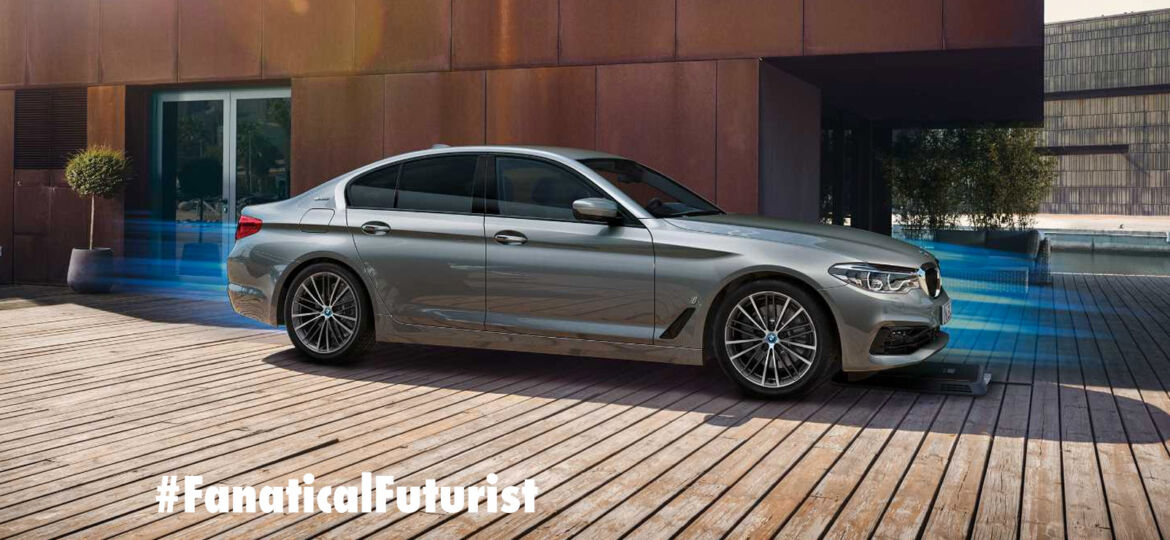
WHY THIS MATTERS IN BRIEF
Just as countries are starting to get used to the idea of rolling out fixed electric vehicle charging stations a new technology is emerging on the scene that could quickly render them obsolete.
Just as we are beginning to get used to the idea of cars with batteries, and not combustion engines, and just as countries, like the US, who recently announced plans for 25,000 miles of charging stations, and China who just unveiled the world’s largest electric vehicle charging network wrap their heads around the idea, along comes another innovative Electric Vehicle (EV) energy technology, Wireless Energy. And now the technology is already starting to, on a limited scale, revolutionise how companies like BMW think about building their next generation of cars, and how countries approach building and regulating tomorrows transportation infrastructure.
Think the way you’ll charge your next generation drone, or your iPhone 8 or X, but bigger and more powerful and you’re in the ballpark, and the potential for the technology, which today still comes predominantly in the form of strips that are installed either into or alongside roads could, once again, help us revolutionise sustainable transport.
Imagine never having to stop to plug in your self-driving car for example, even if it is only for thirty seconds thanks to a new fast charging polymer, and say goodbye to those annoying inconvenient pit stops.
Wireless energy transfer was first demonstrated by Nikolai Tesla in 1891 who had an obsessive interest in it that led him to produce the Tesla coil, a device that produces high voltage and high frequency alternating currents that allowed him to transfer power over short distances via a phenomenon called “Resonant Inductive Coupling,” which is the near-field wireless transmission of electrical energy between two magnetically coupled coils.
Fast forward over 130 years and this same approach is increasingly being tested in various countries as a potential means of charging EV’s on the move.
In Italy, for example, they’ve been using the technology, from a German company called Conductix-Wampfler, which claims a 95 percent energy transfer efficiency, for the past fifteen years to power their fleets of electric buses which re-charge at each stop, and elsewhere the Netherlands started using the technology back in 2010, and in 2011 the Korea Advanced Institute of Science and Technology (KAIST) tested its “Online Electric Vehicle” (OLEV) project, that involved burying electric power strips at a depth of 30 cm (11.8 inches) beneath the road surface and were connected to the national grid to power the city’s tram network. So the short story? The technology works, but soon will come the hard part of commercialising it and scaling it.
Asides from the obvious benefits of wireless EV charging there are other benefits too, for example, the size of the electric batteries in vehicles, which can weigh in some cases up to half a ton, can be dramatically reduced, or eliminated altogether, making vehicles much lighter and more energy efficient, and with just a gap of 7 inches between the road surface and the bottom of each vehicle companies have been able to achieve 85 percent charging efficiency at 100 kilowatts.
In most cases the wireless charging plates, which are buried beneath the road surface, and account for between 5 and 10 percent of an entire route, remain switched off until a vehicle approaches and it takes 30 minutes of charging for OLEV to fully charge a vehicle with each vehicle able to travel at least 40 km between plates meaning they can veer off the main highways if they need to for, well, you know, snack breaks. After all, we still need those.
As the hype around wireless EV charging starts to take off, more and more companies, such as Qualcomm, Momentum Dynamics, WiTricity, Evatran and WAVE are all investing in it, and earlier this year the UK, who are also now committed to introducing self-driving cars onto the UK’s roads by 2021, announced their intention to invest £500 million in the technology over the next five years and test their own “Charge as you Drive” motorways following completion of a feasibility study that was commissioned by Highways England.
The initial tests will take place next year and they’ll aim to evaluate the potential of the technology to help reduce fuel costs, their impact on road surfaces and it’s ability to reduce the environmental impact of road transport including improvements in air quality, reduced noise and lower carbon emissions.
Wireless charging in the UK is not without its critics though. For example, Dr Paul Nieuwenhuis the director of Cardiff Business School’s Electric Vehicle Centre of Excellence is fairly sceptical, on grounds of the cost and the fact that battery technology is improving all the time, particularly with regard to what Tesla, this time the one Elon Musk owns, has managed to achieve in recent years, and even if wireless charging does make it on to Britain’s roads, Highways England, ever conservative still intend to install plug-in charging points for EVs at 20 mile intervals on the motorway network – something that in its own right will help boost the uptake of EV’s in the country.
Today though the transportation sector is being transformed by both the development of autonomous and electric vehicles, and as one country after another, from France and India, to China and the UK introduce bans from 2030 on the sale of combustion engines the only way, for electric vehicles at least, is up. So whatever happens in the world of wireless charging one thing can be certain – over the next two decades you’ll increasingly be able to wave goodbye to filling up with fuel the dinosaurs made, and the only reason you’re going to stop on the road is because you’ve run out of snacks. But then why stop when you could just get a drone take away delivered straight to your Audi autonomous pod, er car?
















